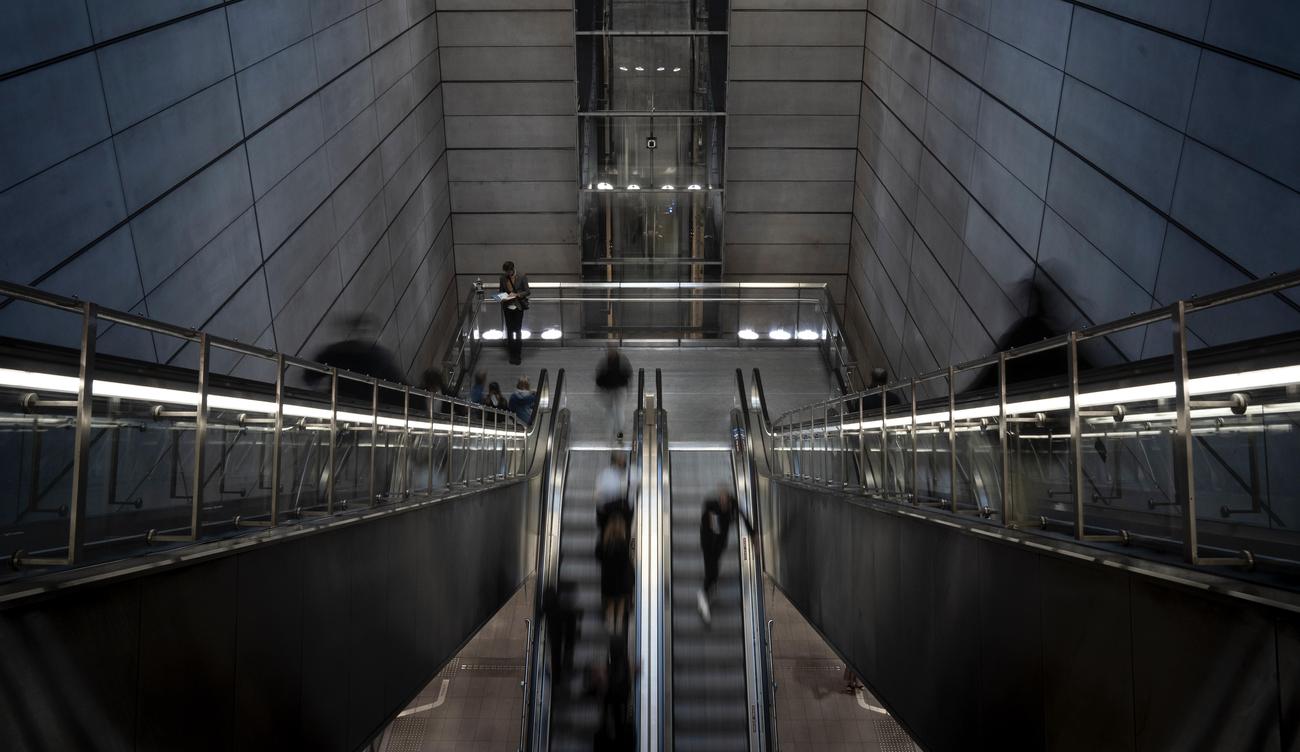The first buildings to feature elevators were hotels. These innovative contraptions revolutionized vertical transportation, making it easier for people to navigate the towering structures. But did you know that in the early days of elevators, there was a handbook advising users on how to dress? Yes, you heard it right. As a seasoned journalist with a flair for uncovering intriguing facts, I am here to immerse you in a captivating journey through the world of elevators. Prepare to be amazed as I unveil some fascinating insights that you never knew about these indispensable inventions.

Fascinating Facts You Never Knew
Elevator Insight: Unveiling Intriguing Facts
Elevators are a daily part of our lives, taking us up and down countless floors. But did you know there is more to these mechanical marvels than meets the eye? In this article, we will explore some incredible facts about elevators that will leave you in awe and appreciation for this essential mode of transportation.
Fact 1: Elevators – Your Safest Journey
Picture this: you step into an elevator, the doors close, and you start ascending or descending. It’s a quick and smooth ride, right? Well, here’s something remarkable – elevators are the safest mode of transportation! With multiple steel cables supporting them, elevators are twenty times safer than escalators. So, the next time you step inside one, rest assured that you are in safe hands.
Quote: Elevators, your trusty travel companions, ensure safety with their multiple steel cables, making them one of the most secure transportation options available.
Fact 2: Elevators – Carrying the World
Have you ever wondered about the sheer volume of people that elevators transport every day? Brace yourself for this astonishing fact about elevators – in just three days, elevators carry the equivalent of the entire Earth’s population! It’s like fitting the world into a small metal box. Quite a remarkable feat, isn’t it?
Quote: Elevators, the silent carriers of humanity, accomplish the incredible task of transporting the planet’s population within a mere three-day span.
Fact 3: Elevators – Scaling America
When it comes to elevators, the United States takes the lead. This vast country is home to over 700,000 elevators, the highest number in the world. From soaring skyscrapers to bustling shopping centers, the American landscape brims with elevators, facilitating smooth vertical journeys and powering the country’s infrastructure.
Quote: Elevators have firmly planted their presence in the United States, with over 700,000 of these mechanical wonders, making it the elevator capital of the world.
Fact 4: Elevators – Ancient Innovation
Elevators have stood the test of time and even graced the presence of ancient civilizations. Take, for instance, the majestic Colosseum in Rome. In its heyday, this architectural marvel boasted an astonishing 24 elevators, manually operated by more than 200 slaves. These elevators aided in swiftly transporting people and objects to different levels of the Colosseum, showcasing the ingenious engineering prowess of ancient civilizations.
Quote: The Colosseum, an iconic structure from antiquity, harbored an army of slaves operating elevators, providing a glimpse into the innovative spirit of our ancient forebearers.
Fact 5: Elevator Technicians – Unsung Heroes
Here’s an interesting twist: more often than not, it is the elevator technicians who face the most risks within elevators, rather than passengers. While elevator mishaps may spark fear in some, it’s crucial to note that elevator-related fatalities primarily affect elevator technicians. These dedicated professionals work tirelessly to ensure the safe operation and maintenance of elevators, putting their lives on the line to keep us moving smoothly.
Quote: Behind these mechanical marvels lie unsung heroes – the elevator technicians – who face the highest risks, evoking gratitude for their unwavering dedication to keeping elevators safe.
Fact 6: The Elevator’s Influence
Beyond their functional purpose, elevators have significantly impacted modern architecture and design. Think of the iconic skyscrapers that dominate city skylines. These feats of engineering would be impossible without elevators, enabling us to reach unimaginable heights and reshape our urban landscapes. Elevators have truly shaped the world we live in today.
Quote: Elevators, the enablers of architectural marvels, have left an indelible mark on modern design and transformed our urban landscapes into magnificent showcases of human ingenuity.
Fact 7: The Elevator’s Inventor
Ever wondered who deserves credit for inventing these incredible machines? That honor goes to Elisha Graves Otis, who introduced the world to the elevator in 1853. Otis’s groundbreaking invention set the stage for the vertical transportation revolution, enabling us to travel effortlessly between floors and reach new heights in human achievement.
Quote: Elisha Graves Otis, the visionary genius, forever altered the way we move by gifting humanity the wondrous contraption we call the elevator.
Fact 8: Elevator Support System
Have you ever pondered what holds elevators up, ensuring their safety and stability? It’s all in the cables! Elevators are supported by multiple strong cables, each capable of carrying the weight of a fully loaded car. These robust cables form a crucial lifeline, holding the key to our vertical journeys, and guaranteeing that we arrive at our desired floors without a hitch.
Quote: Elevator cables, like unyielding guardians, bear the weight of our journeys, ensuring that each ride is safe, secure, and free from worry.
Fact 9: Elevator’s Global Commute
It’s time for another mind-boggling fact about elevators. In every three days, elevators carry the staggering weight equivalent to the entire Earth’s population! Just visualize the immense number of people and goods that rely on elevators to reach their destinations quickly and efficiently. It’s truly remarkable how elevators make the world go round.
Quote: Elevators, the global connectors, embrace the weight of humanity’s journeys, covering unfathomable distances within a mere three days.
Fact 10: Elevators – A Staple in Modern Buildings
Elevators have become synonymous with modern commercial buildings, office complexes, and bustling shopping centers. Without these vertical conveyances, our urban landscapes would be incomplete, lacking the convenience and efficiency that elevators provide. So, the next time you admire the towering structures around you, remember that elevators play an integral role in shaping our modern world.
Quote: Elevators – a defining feature of modernity – seamlessly journey through the vertical dimensions of our buildings, offering convenience and accessibility that befit our fast-paced lives.
Fact 11: Take the Elevator – Play It Safe
Despite fears of getting stuck or experiencing free-falls, riding in an elevator is remarkably safe. Elevators undergo rigorous safety measures, ensuring that passengers reach their destinations without any anxiety. So, the next time you step into an elevator, relax and enjoy the smooth ride, knowing that you are in safe hands.
Quote: Leave your worries at the entrance – elevators stand as symbols of safe travel, promising smooth rides and worry-free journeys.
Fact 12: The Top Floor’s Transformation
Before the advent of elevators, the top floor of a building was often considered the least desirable place to live. Climbing numerous flights of stairs was a daunting task that deterred many from residing on higher levels. However, with the invention of elevators, the top floor has undergone a remarkable transformation, becoming a symbol of luxury and exclusivity, with breathtaking views and a serene escape from bustling city life.
Quote: What was once deemed a less-than-ideal living space has now become the domain of luxury, with the top floor offering unparalleled views and an escape from the hustle and bustle of city life.
In conclusion, elevators are much more than mere metal boxes that transport us up and down buildings. They are marvels of engineering and innovation, ensuring our safety, connecting the world, and shaping our urban landscapes. The next time you step into an elevator, take a moment to appreciate the fascinating facts that lie behind this incredible invention. Elevators truly elevate our lives in ways we never knew.
Facts About Elevator
Did you know that grain elevators have played a crucial role in the agricultural industry for years? These towering structures, also known as silos, store and transport vast quantities of grain, ensuring a steady supply of food for the world. If you’re curious to learn more about these impressive feats of engineering, check out our article on facts about grain elevators. It’s filled with fascinating information that will surprise you!
Elevators aren’t just for moving grain, though. They also serve as an essential mode of transportation, especially for kids. If you want to discover intriguing facts about elevators tailored towards young learners, don’t miss our engaging article on Facts About Elevator For Kids. Learn how elevators work and how they’ve evolved over time in a way that will captivate children’s imagination.
Ever wondered about the origins of elevators? Curiosity sparked about when the first elevator was invented? You’re in luck! Our article on When Was The Elevator Invented delves into the history of elevators and their groundbreaking invention. Discover how this invention revolutionized architecture and transportation.
If you’re interested in learning more about the specific details surrounding the elevator invention, our article on facts about the elevator invention is a must-read. Uncover interesting facts and lesser-known tidbits that will leave you amazed by the engineering ingenuity behind elevators.
Have you ever marveled at the charm of old elevators found in historical buildings? Our article on facts about old elevators will transport you back in time as we explore the rich history and architectural wonders of vintage elevators. Discover the unique features and stories behind these classic machines.
Lastly, if you’re curious about the intriguing profession of an elevator installer, you can’t miss our article on interesting facts about elevator installer. Learn about the skills required, fascinating challenges faced, and the vital role these professionals play in ensuring safe and efficient elevator operation.
Explore these exciting articles to quench your curiosity about elevators and expand your knowledge on this fascinating topic!
The First Buildings to Feature Elevators Were Hotels
Did you know that the first buildings to feature elevators were hotels? It’s true! These large, urban hotels in major cities like New York, London, and Paris were at the forefront of elevator technology. In fact, the world’s first passenger service elevator was installed in a five-story hotel on Broadway in New York in 1857. Manufactured by the Otis Elevator Company, this steam-powered elevator revolutionized the way people moved within buildings.
Imagine stepping into a hotel and being whisked away to your desired floor without breaking a sweat. That’s exactly what these early elevators provided. With a maximum load capacity of 450 kilograms (992 lbs.) and a top speed of 12 meters per minute (39.4 ft./min.), these primitive elevators may not have been as fast or spacious as today’s models, but they were an impressive innovation in their time.
<> Elevators in hotels paved the way for the vertical transportation systems we rely on today, providing convenience and accessibility for guests from the very beginning.
But the story of elevators starts long before their appearance in hotels. The origins of elevators can be traced back to ancient Greece, where they were first invented by mathematician Archimedes in 235 BC. These early elevators, known as “hoists,” were used to lift heavy objects. However, it wasn’t until the 1800s that elevators resembling the ones we know today were invented.
<> Elevators have come a long way since Archimedes’ hoists, evolving to become an integral part of our modern world.
In the early days of elevators, highly skilled operators were needed to operate the machinery safely. In Germany, boys would undergo three years of study to become elevator operators. But as technology advanced, the need for operators diminished. The invention of the push button in the early 20th century replaced the role of elevator operators, simplifying the process for riders.
<> The push button not only made elevators more accessible but also contributed to their widespread adoption, transforming the way we navigate buildings.
While elevators have become a common feature in commercial buildings, they have also found their way into luxury accommodations. Take, for example, The Langham hotel, where the penthouse suite boasts its own private elevator. This exclusive amenity adds a touch of opulence for guests seeking the utmost comfort and convenience.
<> Private elevators in luxury hotels like The Langham epitomize the merging of functionality and luxury in modern architecture and design.
Elevators have had a profound impact on society, becoming a symbol of progress and modernity. They have enabled the construction of towering skyscrapers, unlocking new possibilities for vertical living and working spaces. Through their continuous evolution, elevators have not only shaped our physical surroundings but have also transformed the way we perceive and interact with the world.
<> Elevators, with their ability to elevate our physical presence, have become synonymous with the progressive spirit of architectural and design innovation.
In conclusion, the first buildings to feature elevators were hotels, paving the way for the widespread adoption of this transformative technology. From the steam-powered elevators of the 19th century to the push-button convenience of today, elevators have revolutionized our vertical transportation systems and become an integral part of our modern world. So the next time you step into an elevator, take a moment to appreciate the immense journey that elevators have traveled throughout history.
Table: Notable Hotels with Historic Elevators
| Hotel | Location | Year Built | Remarkable Elevator Feature |
|---|---|---|---|
| The Langham | London | 1865 | Private elevator in the penthouse suite. |
| The Savoy | London | 1889 | The first electric elevator in a European hotel. |
| The Waldorf Astoria | New York City | 1931 | Iconic Art Deco elevators, beautifully restored. |
| The Ritz Paris | Paris | 1898 | Historic hydraulic elevators, still in operation. |
| The Plaza | New York City | 1907 | Lavish brass elevators adorned with intricate designs. |
| The Fairmont Empress | Victoria, Canada | 1908 | Beautifully crafted birdcage-style elevators. |
With their rich histories and unique elevator features, these hotels offer a glimpse into the captivating legacy of elevators in the hospitality industry.
One early handbook advised lift users on how to dress
Did you know that in the early 20th century, riding an elevator was considered a social event? Exiting an elevator was like stepping out onto a social stage, and people would dress up for the occasion. In fact, early handbooks even advised lift users on how to dress, comparing the elevator’s arrival to a curtain rising on that stage. This fascinating piece of elevator history shows just how much the perception of elevators has changed over the years.
Imagine stepping into an elevator and being greeted by a sharply dressed operator. Well, that was the norm back then. Elevator operators were highly trained professionals who had to study for three years to become skilled in their job. They were responsible for safely operating the elevator and ensuring the comfort of the passengers. Their presence added a touch of elegance and sophistication to the elevator experience.
But the invention of the push button in the early 20th century marked the end of elevator operators. This innovation revolutionized the elevator industry and made it possible for people to operate elevators on their own. Suddenly, riding an elevator became more convenient and efficient, but it also signaled a shift in the social dynamics of elevator travel.
As elevators became more common and accessible, they also became a symbol of luxury and exclusivity. For example, at The Langham hotel in London, they offer a luxury penthouse suite with its own private lift. Imagine having your own elevator to whisk you up to your exclusive retreat. However, such luxury comes at a steep price, around £24,000. It’s a testament to how elevators have evolved from functional transportation devices to status symbols.
To operate early elevators, elevator operators used a device called a shipper rope. This rope allowed them to control the movement of the elevator car, ensuring a smooth and safe ride for the passengers. It’s incredible to think about the intricate mechanics and engineering that went into early elevator systems. Elevators truly are a marvel of human ingenuity.
Even with all the advancements in elevator technology, safety remains a top priority. It’s important to watch your step when entering or exiting an elevator to avoid tripping. While riding in an elevator at work can be safe, accidents can still happen. That’s why it’s crucial to be mindful of your surroundings and follow proper safety protocols.
To summarize, early handbooks advised lift users on how to dress, signaling the social importance of elevator travel. Elevator operators used to be a common sight, adding elegance and sophistication to the experience. The invention of the push button marked a shift in the dynamics of elevator travel, making it more convenient and efficient. The Langham hotel offers a luxury penthouse suite with its own private lift, showcasing the exclusive nature of elevators. Elevator operators used a device called a shipper rope to control early elevators. Safety is paramount when using elevators, so it’s important to be mindful and follow proper protocols.
Intrigued by the fascinating history and mechanics of elevators? Stay tuned for more captivating insights as we continue our exploration of this essential aspect of modern life. Together, let’s uncover more intriguing facts you never knew about elevators.

FAQ
Question: When were the first elevators installed in buildings?
Answer: The first buildings to feature elevators were large, urban hotels in major cities like New York, London, and Paris. The world’s first passenger service elevator was installed in a five-story hotel on Broadway in New York in 1857.
Question: What was the purpose of elevator operators?
Answer: Elevator operators were highly skilled in the early days of elevators. In Germany, boys would study for three years to become elevator operators. Their role was to manually control the elevators using a device called a shipper rope.
Question: How did the invention of the push button impact elevator operation?
Answer: The invention of the push button in the early 20th century marked the end of elevator operators. This innovation replaced the need for manual control and allowed passengers to select their desired floor with the push of a button.
Question: Are there private elevators in luxury hotels?
Answer: Yes, luxury accommodations like The Langham hotel offer exclusive amenities, including private elevators. For example, the penthouse suite at The Langham hotel includes its own private lift, providing a personalized and luxurious experience for guests.
Question: How did early handbooks advise lift users on elevator etiquette?
Answer: Early handbooks advised lift users on how to dress, comparing the elevator’s arrival to a curtain rising on a social stage. Exiting an elevator was seen as stepping out into society, and people would dress up to make a favorable impression.
- Pampa Mourns Kaley Bilyeu, 18, Killed in DUI Crash - November 22, 2024
- Marianne Ginther: The Untold Story of Newt Gingrich’s Second Wife - November 22, 2024
- Lapeer Teacher Keith Corbett Faces 34 Felony Sex Crime Charges - November 22, 2024














